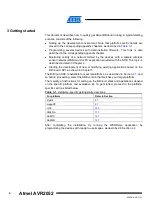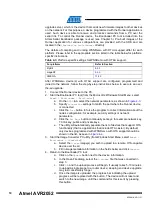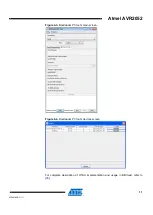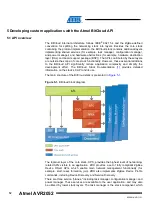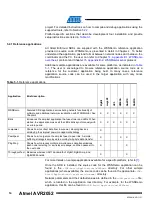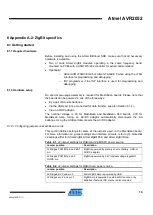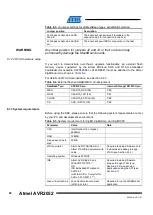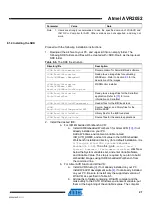
8
Atmel AVR2052
8200M-AVR-11/11
Figure 4-1.
WSNMonitor GUI.
The
topology pane
displays the network topology in real time, which helps the user
monitor the formation of and dynamic changes in the network while nodes join, send
data across, or leave the network. The network topology is constructed on the basis
of next-hop information for each of the nodes, and each link is also tipped with RSSI
and LQI values. Each of the nodes displayed is depicted by an icon, with the node’s
address or name below and sensor readings to the right of the icon, if required by
settings.
The
sensor data pane
displays data coming from onboard sensors of the selected
node (see Section
). It is presented in graph and table form. Other parameters
can be observed for each node in table form. The
node data pane
includes a
sensor
selection combo-box
, which is used to switch between sensor types.
By default in the topology pane, nodes are labeled with their short addresses.
However, another title can be assigned to any desired node by a double click. If
“Cancel” is pressed in the opened window, the node’s title is set back to the short
address.
4.5.1 Node timeouts
The
Window/Preferences
menu of WSNMonitor contains a number of parameters
used to control application behavior. Timeouts are used to tune visualization of
coordinator, routers, and end devices as the nodes disappear from the network each
time a connection is lost, power is down, or a reset has occurred. A node timeout
corresponds to the time the WSNMonitor application waits for a packet from a




